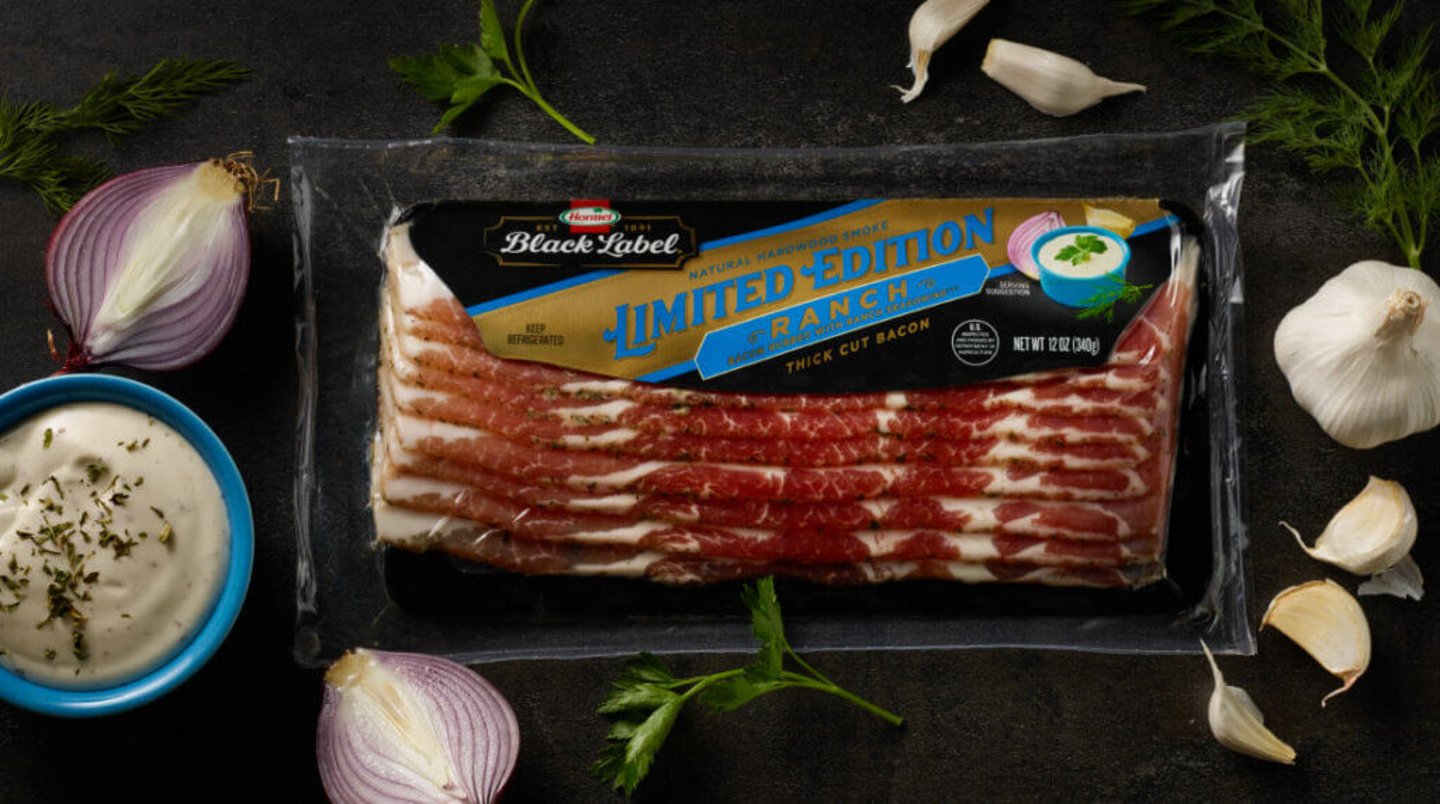Pork Sales Under Pressure
Pork is one of the most versatile proteins in both flavor and applications. From whole-muscle cuts like chops and roasts to such summertime grilling staples as ribs to perennially popular bacon, pork lends itself to a host of products and profiles.
According to the U.S. Department of Agriculture (USDA), per capita pork consumption reached 50.2 pounds in 2023, continuing a downward trend that started in 2019. Demand is expected to slightly ebb again this year, even as supplies remain stable.
[RELATED: Meat Trends Worth Heeding]
Other research affirms that trajectory. “Pork sales during the latest 52 weeks ending April 28 are down a bit in both dollars and pounds,” notes Anne-Marie Roerink, principal at San Antonio-based research firm
210 Analytics. “In a way, this is surprising due to the favorable price per pound in comparison to the other red meats.”
What’s driving that trend? “One major reason for this is that pork sales are driven by the older generations and Boomers in particular,” explains Roerink. “Boomers represent 33% of total meat department sales and over-index at 117 for pork, while under-indexing for chicken. Millennials, on the other hand, over-index for chicken, but under-index for pork, at 77. That means the more meat department dollars start to shift to young shoppers, the more pressure on pork sales.”
Patrick Fleming, brand specialist at Chicago-based Midan Marketing, also addressed the pork conundrum in a recent blog post, concurring that demographic-based eating trends are major factor. “There are a number of reasons for soft pork sales,” wrote Fleming. “First, there’s been a significant shift in consumer demographics. Traditional pork consumers tend to be Baby Boomers, who are empty nesters now. They still have high affinity for pork, but their consumption rates are falling. At the same time, the industry has struggled to build relevance with Millennials and Gen Zs. These groups do engage with pork, but it’s mostly via charcuterie and pizza toppings — not fresh pork.”
Rick Stein, VP of fresh at Washington, D.C.-based FMI — The Food Industry Association, agrees that there are opportunities to build market share for pork. “Currently, pork is struggling in the protein department,” admits Stein. “It’s not the lowest-priced protein — chicken is — and it does not have the perception of quality that beef holds. However, that is the issue in the U.S., whereas in other countries, pork has built a great reputation as the protein of choice. So, the challenge for the pork industry is to make pork more relevant, especially to younger consumers.”
Generating Excitement and Engagement
To the experts’ point, pork producers and brands, along with retailers, can work to boost pork sales, especially among younger consumers, with innovative products, packaging, recipes and promotions. The pork industry is also doing its part, as Roerink points out: “This is why the National Pork Board is working very actively in research and programming to elevate the use and love for pork among younger generations.”
Some brands have found success emphasizing the eating quality of pork. Merriam, Kan.-based Seaboard Foods, for example, has fared well with its Prairie Fresh USA Prime line of premium pork that undergoes a three-step evaluation process. “One thing that is unique with our USA Prime is that we use a technology that scans the whole carcass for the lipid amount, so everything that comes from that is USA Prime, and the marbling is very consistent,” notes Ozlem Worpel, Seaboard’s VP of marketing and innovation.
[RELATED: Majority of Consumers Can Be Persuaded to Spend More on Meat]
Worpel underscores the importance of the flavor proposition in reaching younger consumers. “There’s a lot to the flavor and versatility story of pork,” she emphasizes. “It’s the best flavor carrier.”
New Ways to Enjoy Pork
Premiumization can draw in consumers across the pork spectrum. The recent rise in thick-cut and seasoned bacon products is one example, evident in such new offerings as Hormel Black Label Ranch Bacon from Austin, Minn.-based Hormel Foods.
Pork-based deli meats are also getting a boost to appeal to more and younger consumers. For instance, as charcuterie remains hot, especially among Millennial and Gen Z shoppers, brands are offering more solutions, including Hormel Gatherings’ new Hard Salami & Pepperoni Tray.
Meanwhile, Smithfield Foods, based in Smithfield, Va., launched a springtime campaign touting its line of Kretschmar Premium meats and cheeses, and rolled out sweet and spicy offerings that included a spiced pineapple ham.
On that flavor note, fully cooked pork products are likewise available in more global and adventurous profiles. Wayzata, Minn.-based Cargill, for its part, has added Chili Lime Pork and Orange Ginger Pork to its line of heat-and-eat offerings.
Meanwhile, brands and grocers can promote smaller pork portions as flavorful, convenient options for shoppers. Recent data from Chicago-based Circana shows that sales of pork ingredients rose 9.7% from April 2023 to April 2024.
Here, too, new products are catering to consumer needs and tastes. North Country Smokehouse, based in Claremont, N.H., recently added Organic Applewood Smoked Bacon Crumbles made from pork bellies sourced at its own farms, while Grecian Delight/Kronos, of Elk Grove Village, Ill., has enhanced its global portfolio with Opaa! ReadyCarved Pork Al Pastor Slices.
- Watching Welfare
Animal welfare, including the raising and handling of hogs within the U.S. supply chain, remains an issue — and sometimes a driver — of pork merchandising.
In California, the 2018 passage of Proposition 12 prohibited the sale of pork from pigs raised in small pens and spaces; it remains in place after the U.S. Supreme Court rejected a challenge to the ban in 2023. More recently, the bipartisan 2024 Farm Bill addressed issues with Prop 12 that have been negatively affecting producers and consumers, including what was seen as a patchwork or piecemeal approach to regulations, with higher prices as fallout.
Various pork brands and retailers have focused on enhancing the welfare of hogs bound for the food chain. According to the Huntley, Ill.-based nonprofit group Crate Free USA, about a third of Costco’s U.S. fresh pork supply is now from Prop 12-compliant housing, and Issaquah, Wash.-based Costco plans to source pork from suppliers using open-pen housing. Meantime, pork brands such as Fairfield, Calif.-based True Story Foods and Westminster, Colo.-based Niman Ranch are also differentiating product lines by highlighting their animal welfare practices.








